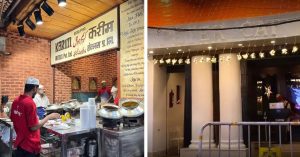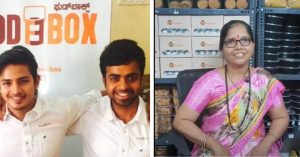Single Mom Behind Mumbai’s ‘Swati Snacks’; Loved by the Likes of M.F & Zakir Hussain
In 1963, Minakshi Jhaveri started Swati Snacks to sell sev puri, bhel puri, ragda pattice and pani puri. Today, the restaurant has scaled up to multiple outlets in Ahmedabad and Mumbai. Here's the story behind the iconic eatery.
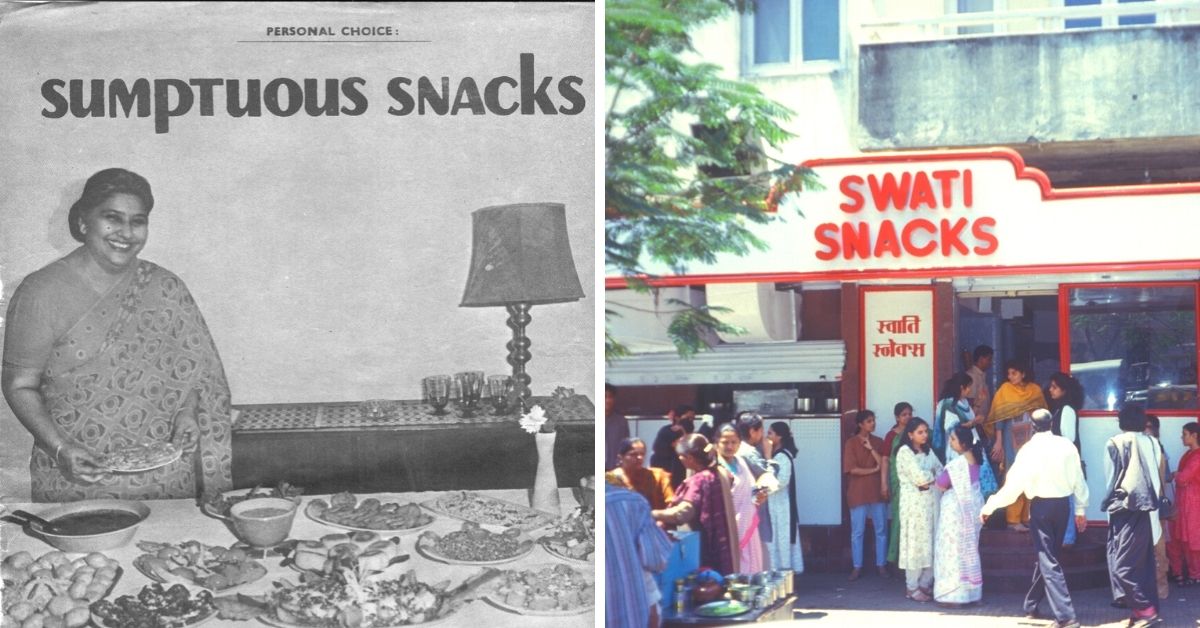
The year is 1963.
In Tardeo, a quaint neighbourhood in Mumbai, Minakshi Jhaveri frantically slices onions and keeps an eye, albeit a watery one, on the boiling potatoes. Her children are already off to school, which means she can give her undivided attention to the first day of her new snacks business.
Even though her friends and relatives have already given their stamp of approval to her finger-licking good chaat, her anxieties are soaring, for this food venture is not to test her culinary skills. It is, in fact, a single mother’s determination to make a better life for her two children — Asha and Anand.
Being self-employed at this homemade food venture will not only give Minakshi control over working hours, but also help her create a culinary legacy. For now, she thinks at least her children will inherit something.
The pressure cooker’s whistle snaps her back to reality, and she quickly packs the chopped veggies, hand pound masalas in newspapers. A taxi and her Maharaj (cook) are waiting downstairs.
A 20-minute cab ride later, the duo arrives at a cramped 110 sq-ft room with a single partition. At 4 pm, Minakshi opens ‘Swati Snacks’, her unassuming eatery that will one day create history in more ways than one.
All four items on her tiny menu — sev puri, bhel puri, ragda pattice and pani puri — are priced at four aanas. The place, with four tables and a modest kitchen, is anything but pretentious. 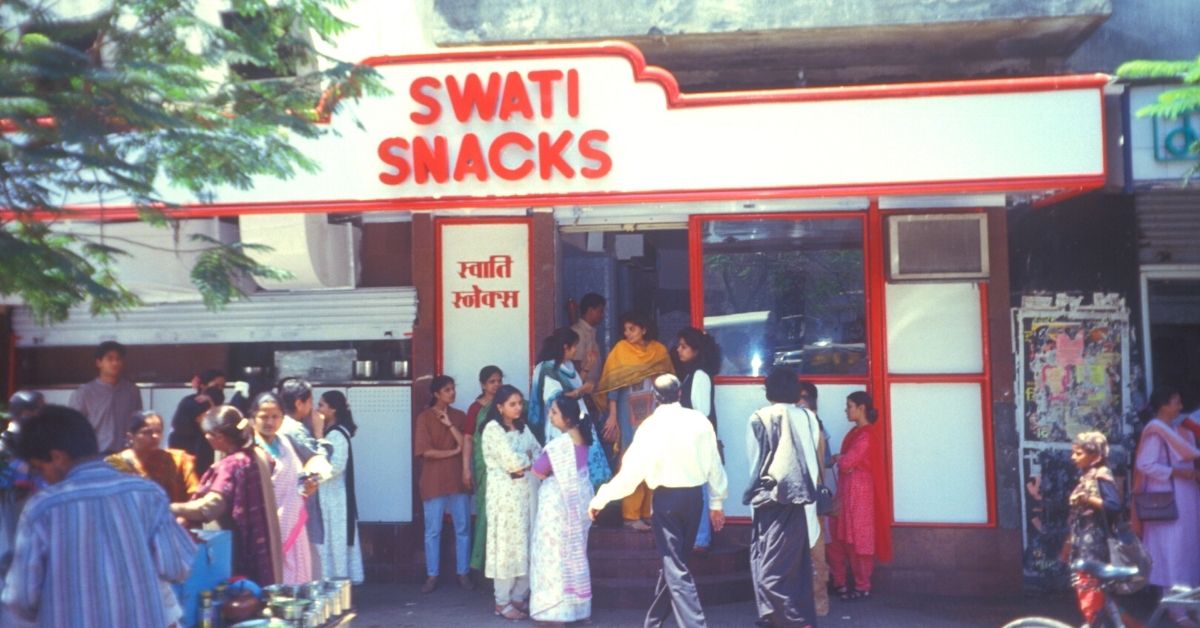
Unlike most Gujaratis, Minakshi neither has business acumen, nor does she offer any delicacies that are specialities, such as fafda, ghatiya, jalebi or undhiyu. And yet, she would manage to carve her signature into the hearts of Mumbaikars with her dazzling smile, a warm atmosphere, and a homemade taste.
Minakshi passed away in 1979 and, as desired, her daughter Asha took over the reins of the iconic brand, followed by Anand. Today, Swati Snacks has four outlets (two each in Mumbai and Ahmedabad) and their monthly turnover touches Rs 4 crore (pre-pandemic). Anand’s son, Shaan, and Asha’s nephew, Karan, are third-generation entrants who have taken the eatery to new heights.
The Better India chats with Asha, Anand and Shaan on the phone (yes, the pandemic did kill my desire to savour the dishes while interviewing the family in person). With their infectious laughter and enthusiasm on an early Thursday morning, the trio takes me on a gastronomic journey and shares why Minakshi is the OG mompreneur.
‘Homeliness is our USP’
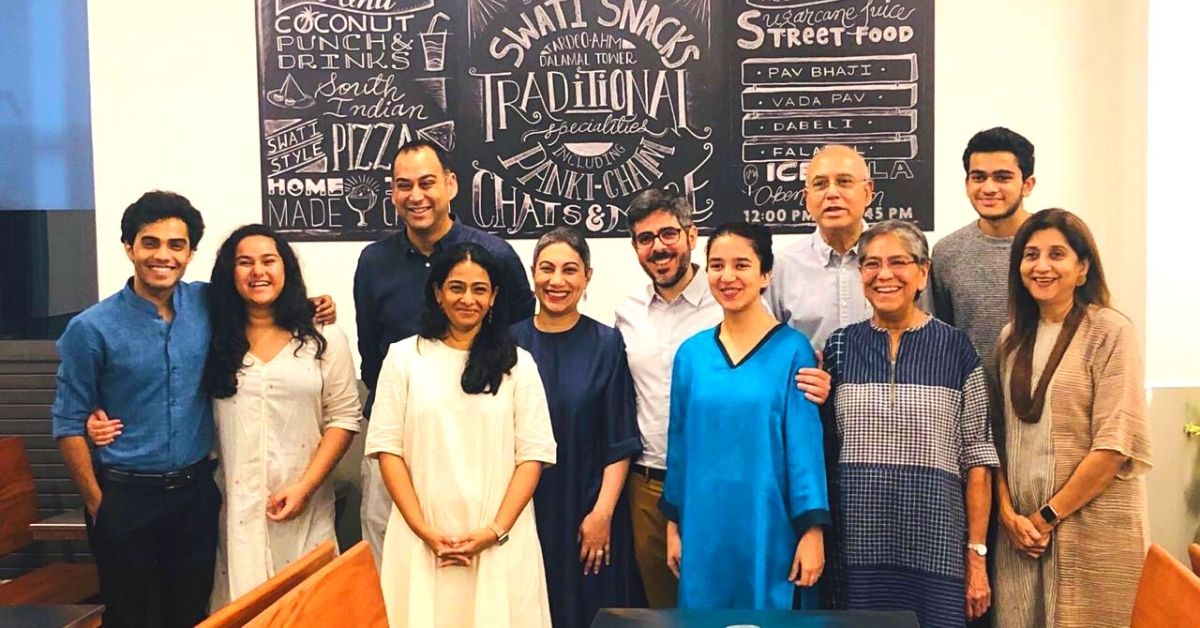
It is only now, in the last few years, and of course, during the COVID-19-induced lockdown, that we have seen an enormous rise in women entrepreneurs starting their ventures from home and scaling it into a successful enterprise.
Way before this trend of mompreneurs who use social media to optimise sales and spread the word came into being, there were a handful of women from traditional households who went on to create legendary brands. Case in point — Lijjat Papad, started by seven homemakers.
One primary reason behind Swati Snacks joining that bandwagon, says Anand, was Minakshi’s food treatment. “My mother treated all her customers the way she would guests who visit our home. For a guest, who is equivalent to God, you will prepare the food with the best intentions and a positive attitude, which automatically reflects in the taste. While growing up, I watched her spend that extra hour just so she could inspect the ingredients multiple times, or even walk kilometres to procure fresh ingredients like coriander. That dedication and care is what we have inherited from her,” he says.
The homeliness was also mirrored in the brand’s name. The family did not have a member named Swati, and it still doesn’t. While they are still conflicted about the mystery behind the name, they like to believe Minakshi chose the name because Swati happens to be a common Gujarati name that resonates with people. It is easy to remember, and also has an alliterative sound to it. 
At this point, Shaan takes the liberty of crediting Mumbai’s fast-paced life for the eatery’s growth. “As lives got busy, people didn’t find the time to make food that needs elaborate preparation. But they missed it, and Swati was filling that void. The eatery was the closest to comforting and healthy snacks for office goers or people who migrated to Mumbai. Word of mouth surely helped,” he says.
Minakshi kept the menu simple with basic street food chaat, but the highlight of the eatery was her hand-churned sitaphal ice cream, which very few stores offered back in the 1960s.
The brother-sister duo were teenagers when Swati Snacks touched its peak, but neither of them were pressured to continue the business. Yet, a clueless Asha instinctively took over in 1979. She had never actively helped her mother in food preparation, nor was she interested in the sales of it, she says.
What followed was months of trial and error, learning about different taste buds, portion control, serving etiquette and, of course, mastering the recipes of their loyal Maharaj.
From adding more innovative items to the menu to changing the eatery timings and planning a harmless plot to involve Anand and Shaan, Asha singlehandedly spearheaded Swati Snacks from 1979 to the early 2000s.
A significant transformation came in 2000, when Asha decided it was time to revamp the place and meet newer trends, while retaining the restaurant’s old charm. Mumbai-based architect, Rahul Mehrotra gave Swati Snacks a minimalist yet elegant look. The stainless top tables and benches gave the place a cafeteria feel, and bright yellow plates provided a quirky touch. The single-sheet laminated menu screamed efficiency and speed, as customers didn’t have to flip through pages to place orders. 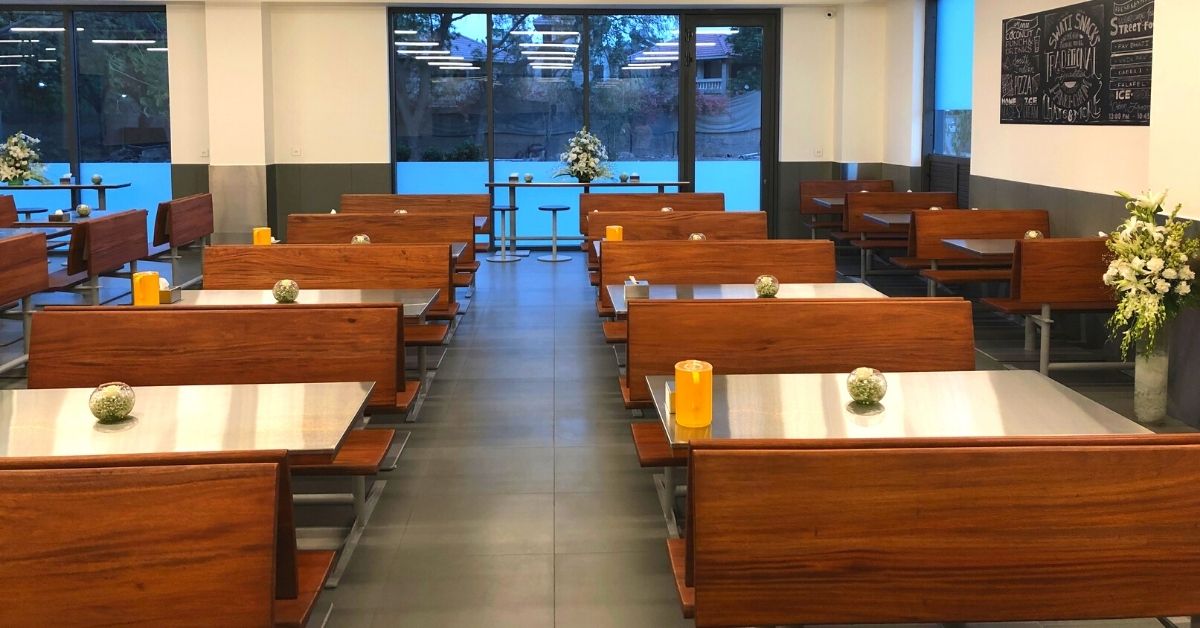
In 2003, Asha opened the second outlet in Ahmedabad and painstakingly trained 40 people from Mumbai to run the restaurant. Anand and Shaan, both architects by profession, were asked to observe and learn for a couple of days, after which, they took over. Asha returned to Mumbai.
The inclusive and humble design of the outlets attracts diners from all walks of life — from businessmen to office goers, college students and taxi drivers.
In the last five decades, the eatery has found fans in stalwarts including legendary painter M. F. Husain, tabla maestro Zakir Hussain, and cricketers, movie stars and industrialists. “Known for his modest lifestyle and coloured kurtas, and the look replete with a smile, M.F. Hussain would come every Sunday evening to have sev puris. Meanwhile, Zakir ji devoured our dahi batata puris,” Asha says.
Besides that, the fast-moving restaurant was listed as their go-to place for vada pav by Michelin star chefs Ravinder Bhogal of Jikoni in London and Prateek Sadhu of fine dine Masque in Mumbai.
Food & consistency
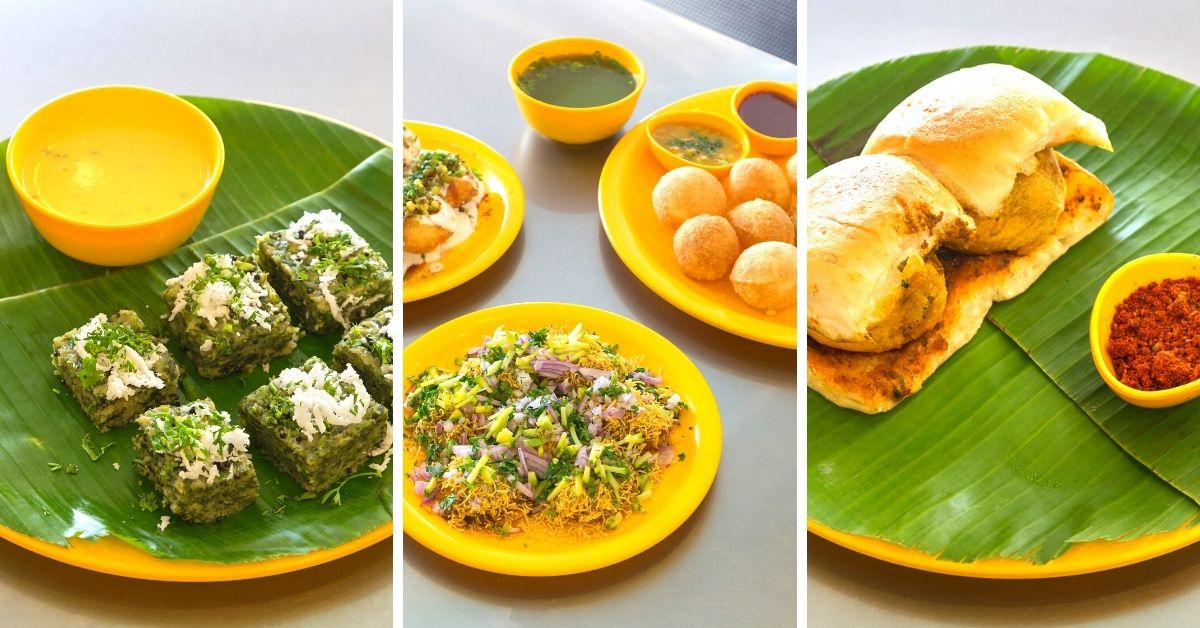
Over the years, the outlets may have introduced subtle changes to keep up with the ever-changing world, but the consistency of the food remains impeccable.
After sourcing ingredients from quality vendors, cooking is restricted to the central kitchen in both the cities, and the food is then dispatched to another outlet. Meanwhile, the chefs have been formally trained for months to ensure standardisation of dishes.
Additionally, one family member tastes each of the items on the menu before the restaurant opens. Anand confesses that at times, even he is mystified by the consistency. Preparations begin as early as 4.30 am and the restaurant opens between 10.30 and 11 am. Asha and Anand make sure that at least one family member is present in every outlet to develop a sense of familiarity with the customers.
Around 25 to 30 delicacies are prepared in Swati’s kitchen every day. By not serving only Gujarati dishes, they cater to every taste bud. Besides chaat, items such as satpadi roti & gatta nu shak (masala roti served with a besan curry) and panki chutney and fada ni khichdi (cracked wheat pulao) are the best-sellers. They have their own recipe that is carefully assorted by Asha.

Panki, which is served on a banana leaf, is arguably the most delicious and delicate dish from the menu, according to the owners. “Batter is directly poured on well-oiled leaves and fermented. The final result is a rice-based steamed pancake with a hint of turmeric. One has to gently separate the pancake from the leaf,” says Shaan. They serve different versions of panki such as pudina panki, a suva (dill) panki and a panki uttapam. A total of 600 pankis, a dish invented by Asha, are sold daily.
The Satpadi roti with gatta is a combination I personally vouch for. The roti has seven layers and each layer is filled with masalas to tantalize your tongue, and the gatta will transport you straight to Rajasthan.
There is a dish for everyone, from children to the elderly, says Asha. It is no wonder that Swati has a loyal customer base. “There is a woman who never misses our coffee in the morning at our Ahmedabad stall. We have industrialists from different cities stopping at our outlet every time they visit. The best feedback we receive is from those who don’t say anything. Their recurring visits every week makes us believe that we are doing something right,” says Anand.
That said, Swati Snacks is not free from its own share of grievances. However, each feedback is given equal importance, and I’m told that the comments are discussed with the staff and swift actions are taken.
With time, a few things have certainly changed — a plate that once cost four aanas now costs anywhere between Rs 100 to 150, and a transition has been made from marketing using word of mouth to posting on social media. However, this has had no impact on the serpentine queue, no matter what time of the day it is.
Get in touch with Swati Snacks here
Edited by Divya Sethu
This story made me
- 97
- 121
- 89
- 167
Tell Us More
We bring stories straight from the heart of India, to inspire millions and create a wave of impact. Our positive movement is growing bigger everyday, and we would love for you to join it.
Please contribute whatever you can, every little penny helps our team in bringing you more stories that support dreams and spread hope.






